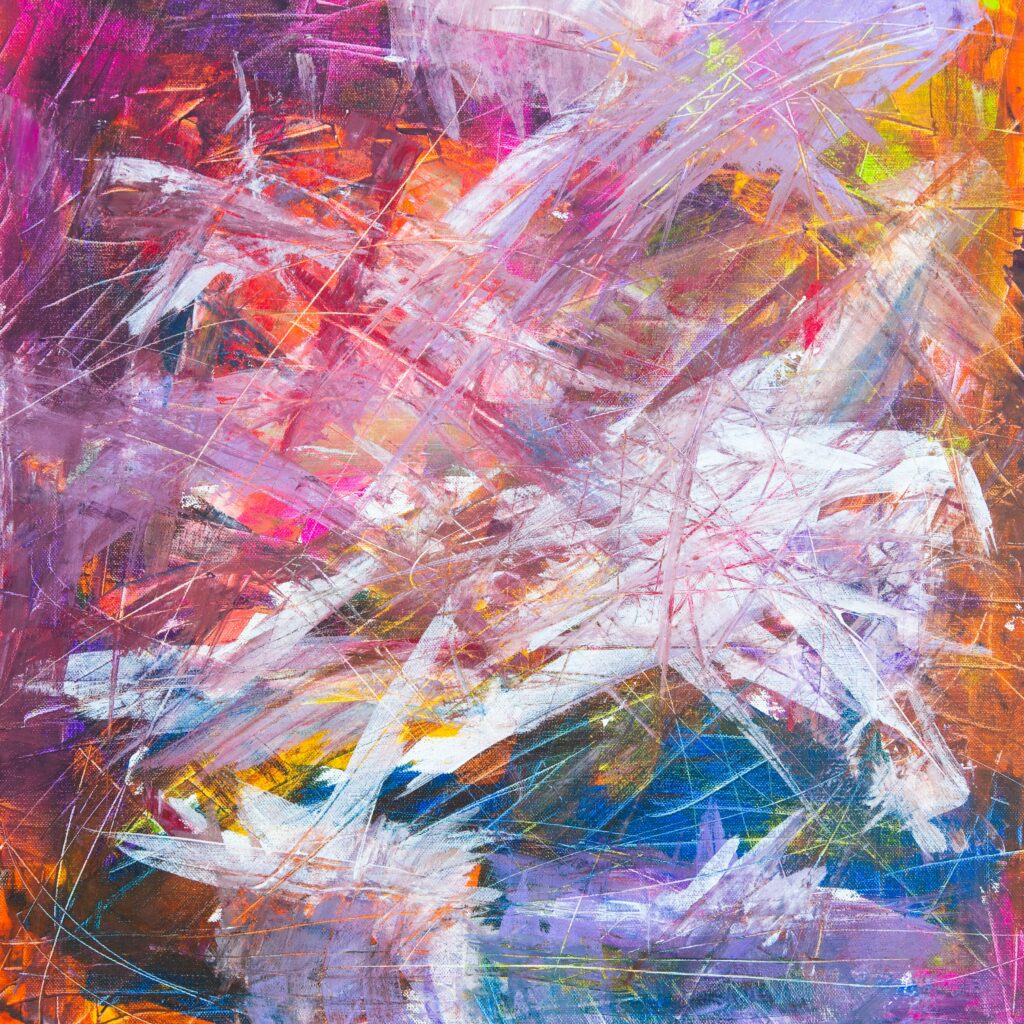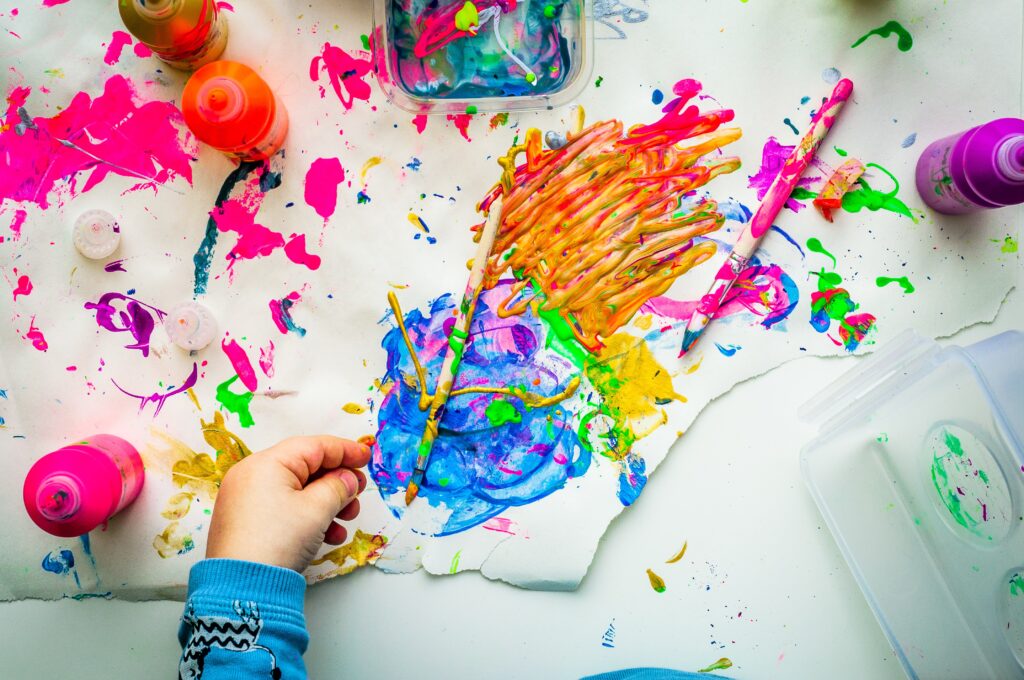Drawing for children is a real creative experiment. Children see the world around them and try to convey it in the picture. To make creative lessons as interesting as possible for children, use different drawing methods, experiment with techniques and improvise. At 3-5 years old, it doesn’t all have to be finger paints – use pencils, sponges, brushes, wax crayons, foam swabs and even fruits and vegetables.
On the TickiT.eu website you can find useful articles on the topic of drawing with children, as well as useful educational toys that will help your child develop their imagination even more. Lots of children who struggle to focus on writing and numbers, love to focus on creative tasks. Allow them to explore and find their way through their creativity.
1. Character skins
Take a few minutes to draw with a felt-tip pen or print simple faces with different emotions. Invite the child to complete the image. Hairstyle will help to make a sad, surprised, cunning face. Any liquid paints will do, you can start with watercolours or coloured ink.
Put a few drops of paint at the edge of the hair. Have your child blow up the blots with a cocktail straw or an empty ballpoint pen.
2. View from the other side
It has long been known that if you look at familiar things from a different angle, the boundaries are erased, new horizons open up. Apply this to the drawing process – and the result will not be long in coming, you will have masterpieces!
Attach the sheets in an unusual place. For example, under the table. This makes things interesting and moves the boundaries of what’s possible.
3. Abstract drawing
Abstract painting is a useful and very exciting activity, it can be very liberating for children. To begin with, lay the artist on a large sheet of drawing paper or a piece of wallpaper. Outline the shape, then ask them to change positions and do a few takes. Then you can take on the brushes and see what happens!
4. Liquid from fluorescent bracelets
It turns out that it is possible to draw with the liquid that is within the fluorescent bracelets. To do this, it must be poured into a glass and diluted with water. This works better with gloves!
So, if you’ve got any old glow sticks lying around, put them to work!
5. Replacement of brushes
Replace the brush with any other drawing tool, such as cotton swabs. The result will surprise you! Think outside the box, you don’t always have to paint with a paint brush after all. Why not try a fork or an old comb?
6. Paints and cling film
Are you afraid that in a burst of creativity a young artist will stain everything around? Are you too concerned about the mess to allow their creativity to flow? If this sounds like you an easy hack is to squeeze paint onto a sheet of paper and cover with cling film. Then, take out a rolling pin to help create the artistic masterpiece.
7. Acrylic paints
Take acrylic paints in tubes. Squeeze out several flowers at some distance from each other. Then you can smear the paints with a comb, rubber spatula, a piece of cardboard, a plastic card, a fork, and so on.
8. Food drawing
If you haven’t tried drawing with food yet, check out a few articles on this. Children love this method.
Age features of children 3-4 years old
At 3-4 years old, children form basic ideas about shape, colour, and size. They are able to compare real objects with their images. At first, little ones are interested in the creative process itself, but then the quality of the picture becomes important to them. They try to draw the subject as natural as possible. Ask the child what colour they chose and why, what they pictured. They will be happy to share their thoughts with you.

Push the boundaries of what’s possible
Right now, at the age of up to 5 years, children are just beginning to learn how to manage various tools, and with their own hands too. They are interested in everything, and they are ready to experiment. If we offer only a brush and a felt-tip pen, we will greatly narrow the horizons of future creativity. Don’t be afraid to try things differently.
Offer as many objects for the image as possible; consider illustrations and real objects, analyse and compare. This broadens the horizon and helps to understand that the world is limitless.
Offer as many tools, materials, techniques, techniques for work as possible. This will help reduce the fear of everything being unknown, as well as developing the imagination.
It is difficult for children at this age to draw even simple geometric shapes. They just don’t technically understand how to do it. Therefore, it is quite acceptable, at first, to use templates, stencils, and starting points.
Creative experiments bring great benefits to children. They not only improve fine motor skills of the hands, but also help to express their feelings, mood, emotions. Children learn to be assiduous and attentive, during classes they analyse, compare, and draw their own conclusions.





3 comments
These are great ideas for getting the little ones to try their creativity.
Wow, some fabulous ideas!
Lovely ideas – something for everyone.